Filter by
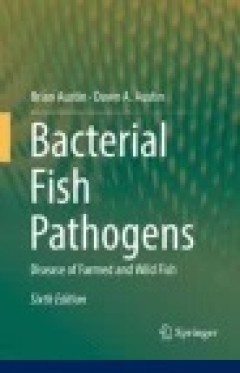
Bacterial Fish Pathogens : Disease of Farmed and Wild Fish
The purpose is to provide up-to-date information on emerging technology available for pathogen identification in farm-raised fish. … This book clearly meets their objectives in defining and describing the bacterial pathogens of fish. The audience is aquatic microbiologists. Any investigator could learn and immediately use the techniques described in this book. … This book presents updates o…
- Edition
- -
- ISBN/ISSN
- 978-3-319-32674-0
- Collation
- XXXV, 732
- Series Title
- -
- Call Number
- 579.3
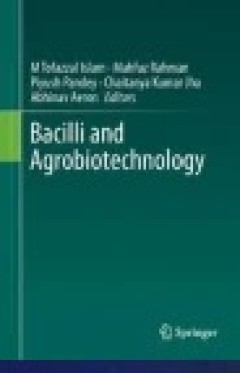
Bacilli and Agrobiotechnology
This volume of comprehensive reviews updates our knowledge of research and commercialization of Bacillus-based products in agriculture and the environmental sector. The last couple of decades have witnessed tremendous growth of research on Bacillus species. Many of these species can produce industrial enzymes, and can act simultaneously as biofertilizers and as biopesticides inhibiting importan…
- Edition
- -
- ISBN/ISSN
- 978-3-319-44409-3
- Collation
- XVI, 416
- Series Title
- -
- Call Number
- 579
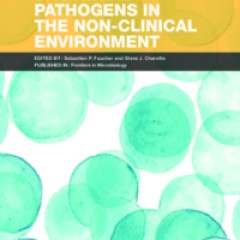
Bacterial pathogens in the non-clinical environment
When thinking about bacterial pathogens, most will consider their interaction with humans. Nevertheless, many pathogens affecting humans will not be transmitted directly from one individual to another but will rather come from or transit through the environment to infect the human host. Outside their hosts, bacterial pathogens must be able to resist environmental stresses and perhaps grow …
- Edition
- -
- ISBN/ISSN
- 16664-8714
- Collation
- -
- Series Title
- -
- Call Number
- 579 FAU b

Invertebrate Bacteriology: Function, Evolution and Biological Ties
This compendium reviews different processes acting on bacterial groups that evolved one or more relationships with members of the most important invertebrate Phyla. Starting from principles of basic bacteriology the book provides data on bacteria interactions with pests, animal or human diseases. Being present in all environments, from deep see to crops, animals or plants, invertebrates represe…
- Edition
- -
- ISBN/ISSN
- 978-94-024-0884-3
- Collation
- -
- Series Title
- -
- Call Number
- -
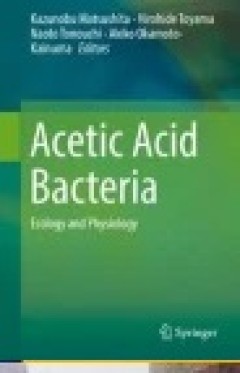
Acetic Acid Bacteria: Ecology and Physiology
This book provides all facets of acetic acid bacteria (AAB) and offers the future targets and directions of AAB research. It summarizes the distinctive physiological properties of AAB and the recent progress on AAB study, especially in the following five areas: 1) Molecular phylogeny and genome study of AAB; 2) Ecological features of AAB: interaction with plants, natural fermentation systems, a…
- Edition
- Ed. 1
- ISBN/ISSN
- 978-4-431-55933-7
- Collation
- VIII, 350
- Series Title
- -
- Call Number
- 576 ACE a
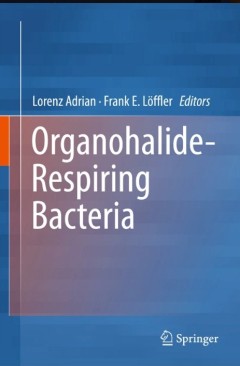
Organohalide-Respiring Bacteria
This book summarizes the current state of knowledge concerning bacteria that use halogenated organic compounds as respiratory electron acceptors. The discovery of organohalide-respiring bacteria has expanded the range of electron acceptors used for energy conservation, and serves as a prime example of how scientific discoveries are enabling innovative engineering solutions that have transformed…
- Edition
- -
- ISBN/ISSN
- 978-3-662-49875-0
- Collation
- -
- Series Title
- -
- Call Number
- 579.3 ORG
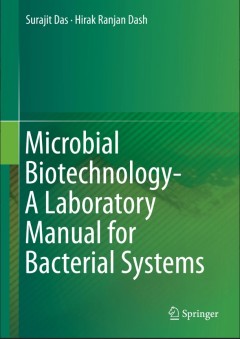
Microbial Biotechnology- A Laboratory Manual for Bacterial Systems
Microorganisms play an important role in the maintenance of the ecosystem structure and function. Bacteria constitute the major part of the microorganisms and possess tremendous potential in many important applications from environmental clean up to the drug discovery. Much advancement has been taken place in the field of research on bacterial systems. This book summarizes the experimental setu…
- Edition
- 1
- ISBN/ISSN
- 978-81-322-2094-7
- Collation
- XVI, 239
- Series Title
- -
- Call Number
- -

Microbial Biotechnology- A Laboratory Manual for Bacterial Systems
Microorganisms play an important role in the maintenance of the ecosystem structure and function. Bacteria constitute the major part of the microorganisms and possess tremendous potential in many important applications from environmental clean up to the drug discovery. Much advancement has been taken place in the field of research on bacterial systems. This book summarizes the experimental setu…
- Edition
- 1
- ISBN/ISSN
- 978-81-322-2094-7
- Collation
- XVI, 239
- Series Title
- -
- Call Number
- -
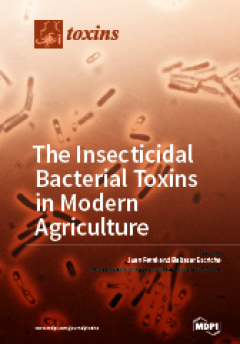
The Insecticidal Bacterial Toxins in Modern Agriculture
Agriculture has suffered enormous changes since the first human attempts to domesticate plants to obtain productive varieties which could become a constant source of food. Many developments have shaped current agricultural systems, especially those that led to extensive industrial monocultures. Concurrently with those, there are numerous other types of small scale agricultural systems with an i…
- Edition
- -
- ISBN/ISSN
- -
- Collation
- -
- Series Title
- -
- Call Number
- 570 INS i
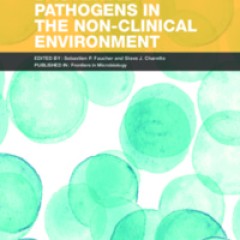
Bacterial pathogens in the non-clinical environment
When thinking about bacterial pathogens, most will consider their interaction with humans. Nevertheless, many pathogens affecting humans will not be transmitted directly from one individual to another but will rather come from or transit through the environment to infect the human host. Outside their hosts, bacterial pathogens must be able to resist environmental stresses and perhaps grow …
- Edition
- -
- ISBN/ISSN
- -
- Collation
- -
- Series Title
- -
- Call Number
- -
 Computer Science, Information & General Works
Computer Science, Information & General Works  Philosophy & Psychology
Philosophy & Psychology  Religion
Religion  Social Sciences
Social Sciences  Language
Language  Pure Science
Pure Science  Applied Sciences
Applied Sciences  Art & Recreation
Art & Recreation  Literature
Literature  History & Geography
History & Geography